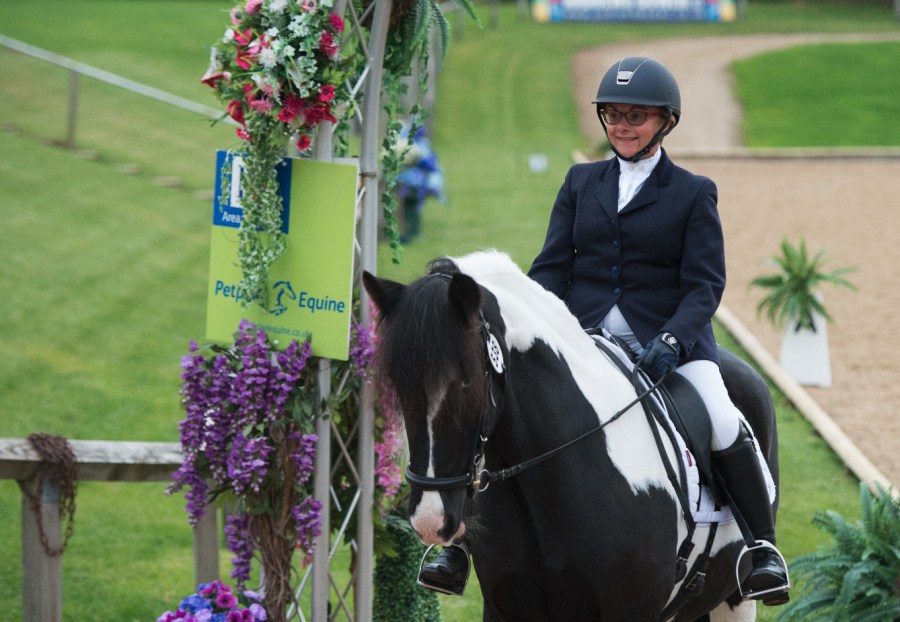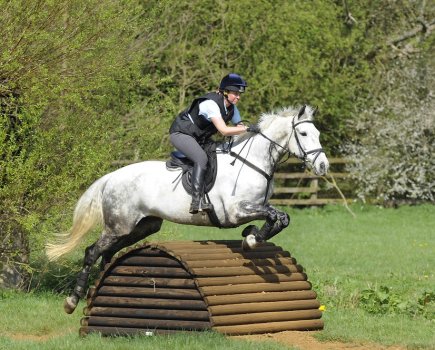In partnership with Petplan Equine
Wondering where to eke out a few more marks in your dressage test? Watch and learn as List 1 judge and BHS chief assessor Andrew Fletcher judges and explains what he’s seeing as a grassroots combination — Clare and Doonaverah Mountain — ride the novice 23 test in the video below (scroll down to view video).
Final preparations
“Before you go into the arena, think ‘Have I got myself in balance? Am I sat where I want to be? Have I got my reins the length that I want them to be? Is the horse in the balance I want him to be?’,” says Andrew.
“You will have done some working in and you will have worked on getting the horse going nicely. The aim is that you can reach the arena and still be in the best possible balance and you can give light aids, with the horse working in front of your leg.”
Go straight first
As Clare rides forward to show medium trot strides on the diagonal, Andrew says: “Remember to be straight before you press for any length of strides. There I feel there could have been a few more transitions in the corner before the movement in order to get the horse more uphill.”
More uphill
Andrew says the horse is on his forehand during the first 20m circle (right).
“It’s little bit down on the forehand and I think the working in could have got the horse a little bit more up in front,” assesses Andrew. “That is done by more return transitions and riding forward.”
When Clare lengthens the trot on the diagonal, the horse could be a little bit rounder in the hand.
“In the training, I would have done a lot of transitions — trot-walk-trot-walk — in order to get the horse more uphill,” says Andrew.
Turn with your eyes
While circling, Clare turns too much with her head.
“You can see here that Clare’s slightly overlooking the circle. She’s looking very left,” explains Andrew. “It’s good to look through your eyes, but you don’t have to turn your head so much when you turn because that could unbalance the horse and throw them to the outside.
“Remember we look through our eyes; we don’t look through turning the head.”
On the forehand
Clare transitions to canter, and the horse’s frame becomes a little low.
“What I would encourage, more than anything, is that you can get horses cantering in a forward way on their hind leg,” says Andrew.
“There I felt Clare rode the movement pretty well, but the horse could be straighter, as the quarters are slightly left and the shoulders are slightly right. Try to work towards having the opposite — shoulders in and quarters a little bit underneath the horse’s belly button.”
In the extended canter, the horse lifts his frame.
“Here the horse comes a little bit uphill and Clare sits well, although maybe a little too open with the inside rein towards the end — she didn’t need to do that,” states Andrew.
Purpose in the walk
“The main principle of the walk is the purpose,” explains Andrew. “Clare could just ride for more purpose from the hind legs, keeping the horse nice and straight in his shoulders and neck, and I think she’d get a bigger mark.
“This horse has a regular walk in a rhythm, it just needs to be bigger.”
Running low
The horse could be rounder in the upwards transition, says Andrew.
“I’d practice that transition a lot when you’re working in, because it’s one of the most difficult things to achieve,” he adds.
In right canter, Andrew remarks that the horse is running a little bit low in the neck.
“Clare did give and retake and did a good job, but the horse is just a little bit low,” he explains. “So a little bit on the forehand, on the shoulder; she needs to get him taking a touch more weight behind.”
Straighten up
“In the medium canter, the horse’s quarters are in, and that’s right in front of the judge’s eye. Work at home at getting that straighter — more lateral work will get the canter straighter.”
Overall assessment
“Clare completed the task; she did everything where she should and therefore it’s a reasonably good clear round,” assesses Andrew. “What she needs to do now is make it better quality. That will come from not running the horse on to the forehand so much. She needs to start and finish all of her movements and use her corners to get the horse more balanced. She does that by taking the weight a bit more behind her through half-halts and then riding forward, as opposed to just riding flat-out go.
“The horse needs to not only be less long longitudinally, that is from his tail to his ears, but he also needs to be more manoeuvrable laterally. That comes from being able to put your leg on and move the horse away from your leg. That is often done through basic work such as leg-yield and turning on the forehand,” continues Andrew.
“I feel that this horse would benefit and become much straighter with more lateral work in his training. So don’t see lateral work as an ‘Oh, I have to do that in a test’, see lateral work as a great tool to make your horse more supple, straighter and in a better balance in the middle of your legs.
“If you feel like your horse is falling out to one side, he’s not in the middle of you and therefore he’s not laterally submissive.
“So work on your longitudinal balance, which is back to front, and your lateral balance, which is side to side. When you have him balanced like that, and better in those two areas, you will be winning.”










